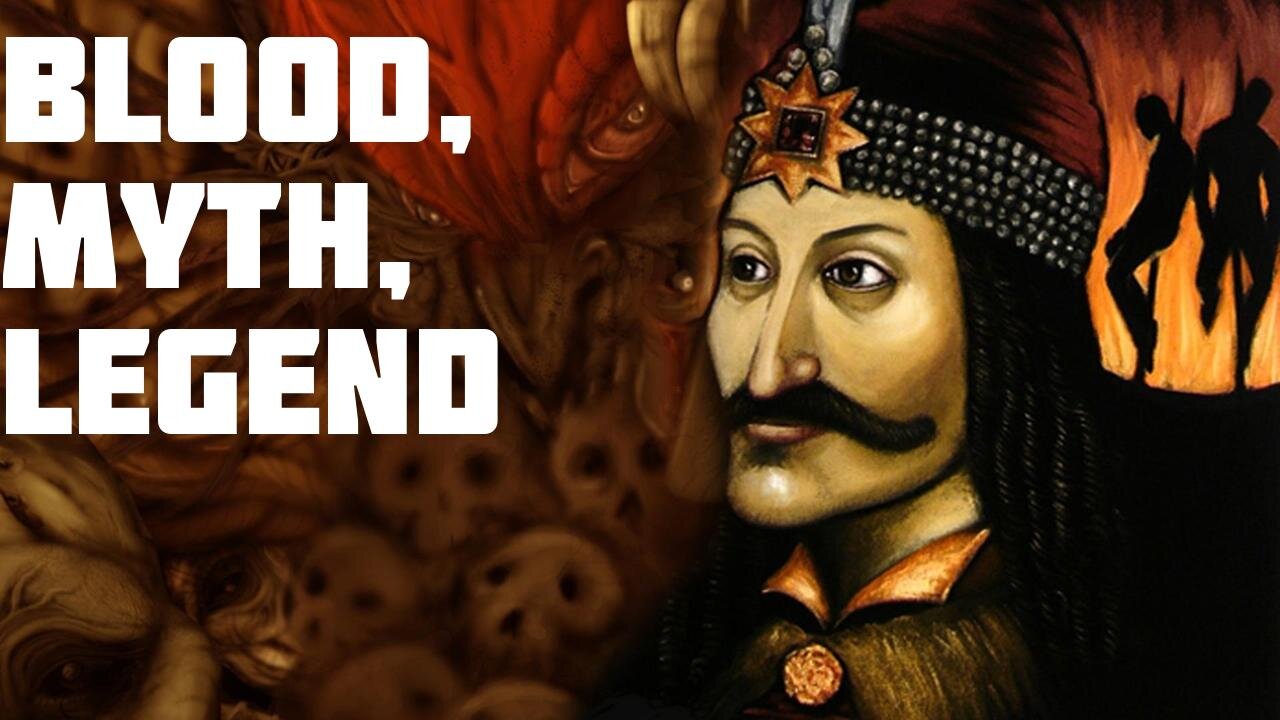Premium Only Content

Vlad the Impaler: Blood, Myth, Legend
Embark on a thrilling journey through the life of Vlad the Impaler, a name that echoes through history, a figure shrouded in both legend and reality!
Vlad III, also known as Vlad Dracula or Vlad Tepes, was a ruler of Wallachia, a region in modern-day Romania, during the tumultuous 15th century. His story is one of power, intrigue, and unimaginable cruelty, a legacy that has captivated and horrified for centuries.
Born between 1428 and 1431, possibly in Sighisoara, Transylvania, Vlad was the son of Vlad Dracul, a member of the Order of the Dragon, a knightly order dedicated to fighting the Ottoman Empire. His early life was marked by political maneuvering and hostage situations within the Ottoman Empire, experiences that shaped his future actions.
Vlad’s rise to power was steeped in conflict. He seized the Wallachian throne multiple times, facing constant opposition from boyars, rival claimants, and the ever-present threat of the Ottoman Turks. His ruthless methods, particularly his favored form of execution—impaling—earned him the moniker "Vlad Tepes," or Vlad the Impaler. This brutal approach, while horrifying, was seen by some as a means to consolidate his power and maintain order in a chaotic land.
His reign saw both military victories and devastating defeats. He famously defied Sultan Mehmed II, even impaling the Sultan’s envoys, leading to a brutal war where Vlad employed scorched earth tactics and a shocking display of impaled victims to deter his enemies.
Captured by Matthias Corvinus, King of Hungary, Vlad spent years in prison. During this time, stories of his cruelty spread across Europe, transforming him into a legendary figure of terror. These tales, often embellished, became bestsellers in their time, solidifying his infamous reputation.
Released from prison, Vlad briefly regained his throne once more, but his final days ended in a bloody battle against a combined Ottoman and rival Wallachian force. His death remains shrouded in some mystery, adding to the mystique surrounding his life.
After his death, Vlad’s legacy continued to evolve. While some viewed him as a ruthless tyrant, others glorified him as a national hero, a defender of his people and a staunch opponent of Ottoman expansion. His name became inextricably linked to Bram Stoker's iconic vampire, Count Dracula, further cementing his place in popular culture.
Vlad's story serves as a powerful reminder of the complexities of history and the enduring power of narrative. His life showcases the blurred line between hero and villain, a consequence of his brutal methods and the context of a world engaged in constant political and military conflict. Ultimately, however, his story teaches us that even amidst the darkest of actions, understanding the motivations and context of historical figures is vital for fair judgment.
Let Vlad's legacy inspire us to delve deeper into the past, to question narratives, and to strive for a more nuanced understanding of the forces that shaped the world we inhabit today. Research Vlad the Impaler further. You might be surprised by what you find!
-
 2:12:01
2:12:01
BlackDiamondGunsandGear
2 days agoAFTER HOURS ARMORY / Antifa / Lies/ Prison time
31.5K1 -
 2:12:00
2:12:00
DLDAfterDark
9 hours ago $11.20 earnedThe After Hours Armory! Tonight is The Chat's Chat! God, Guns, and Gear!
38.6K4 -
 3:32:18
3:32:18
Mally_Mouse
12 hours ago🌶️ 🥵Spicy BITE Saturday!! 🥵🌶️- Let's Play: Phasmophobia
49.4K5 -
 1:13:19
1:13:19
iCkEdMeL
8 hours ago $17.46 earnedChaos Explodes in Chicago & Portland | Feds Clash with Protesters!
52.4K18 -
 21:54
21:54
Exploring With Nug
1 day ago $10.29 earnedScuba Diving Missing Person Search Leads to Discovery of Classic Cars!
64.1K13 -
 8:06:32
8:06:32
Phyxicx
13 hours agoStar Wars: Movie Battles II Community Event hosted by ReaperAF95 - 10/4/2025
29.8K -
 1:19:51
1:19:51
World2Briggs
11 hours ago $2.63 earnedThe US This Week
35.1K7 -
 2:31:13
2:31:13
Joker Effect
8 hours ago"MAKE STREAMING GREAT AGAIN" - Brands Step Up Finally. Birth of Rumble Community. Taking Leadership
21.5K3 -
 5:02:17
5:02:17
Illyes Jr Gaming
12 hours ago"Machine Gun" Takes On BLACK OPS 7 Beta DAY 3!!!
13.9K1 -
 2:57:29
2:57:29
Damysus Gaming
8 hours agoBorderlands 4 - AMON Vs Timekeeper!! Lets Grind This OUT!!
12.1K
